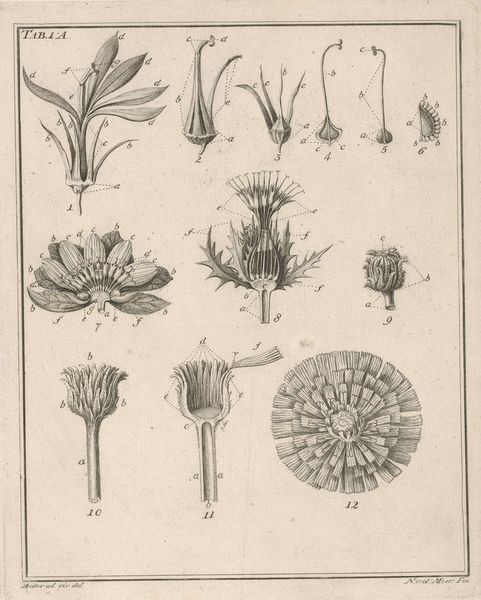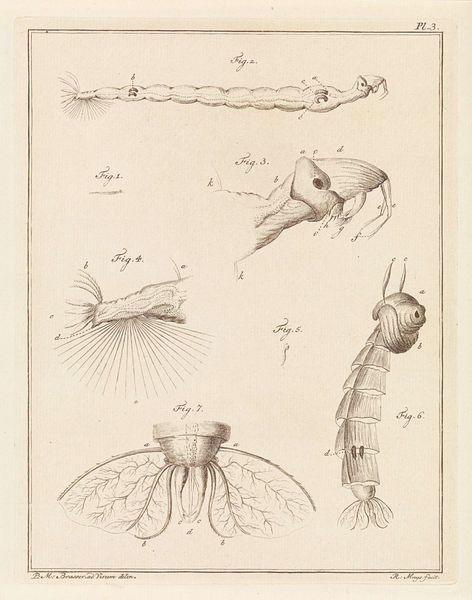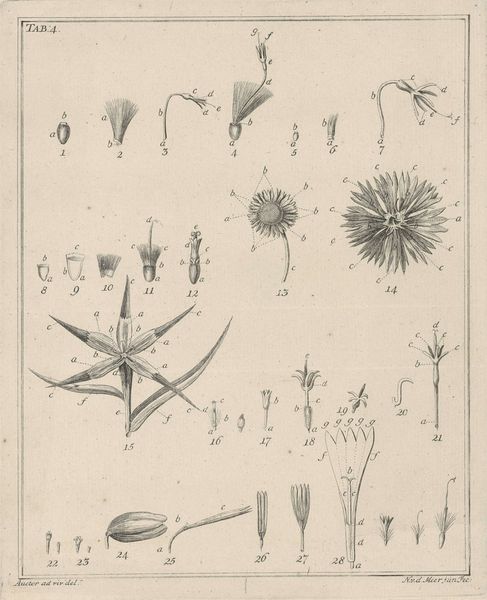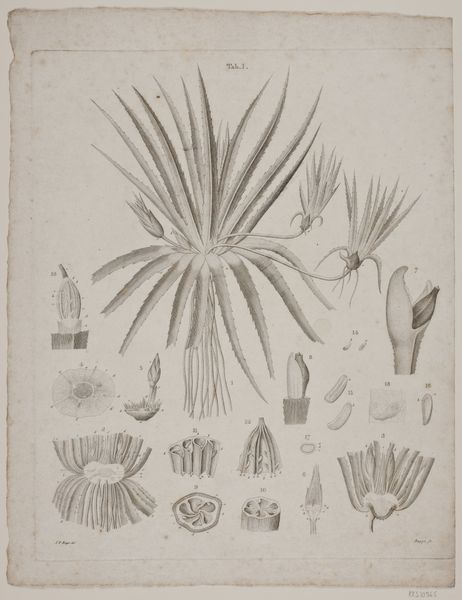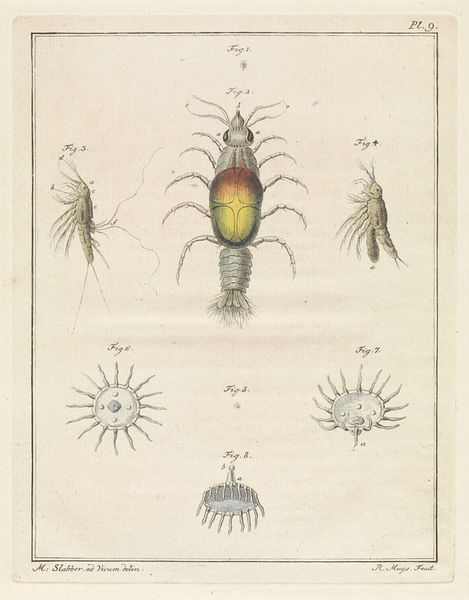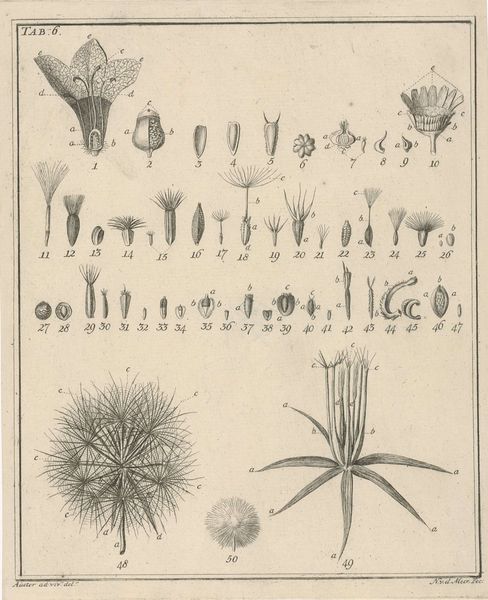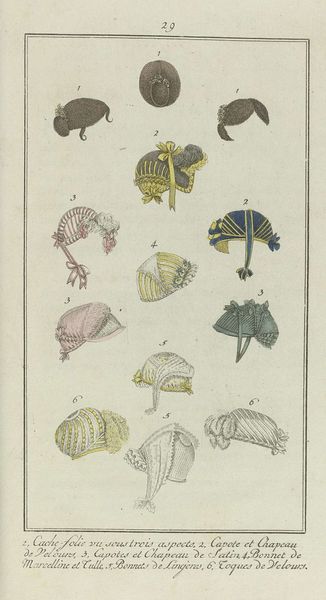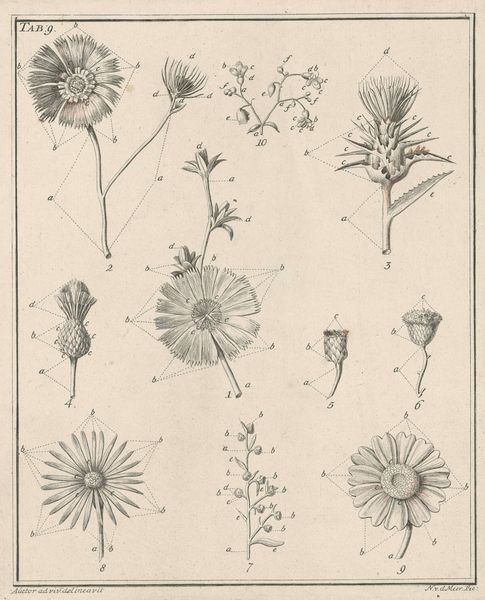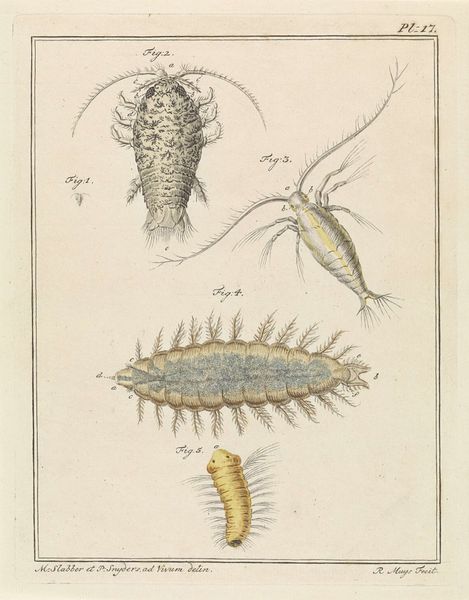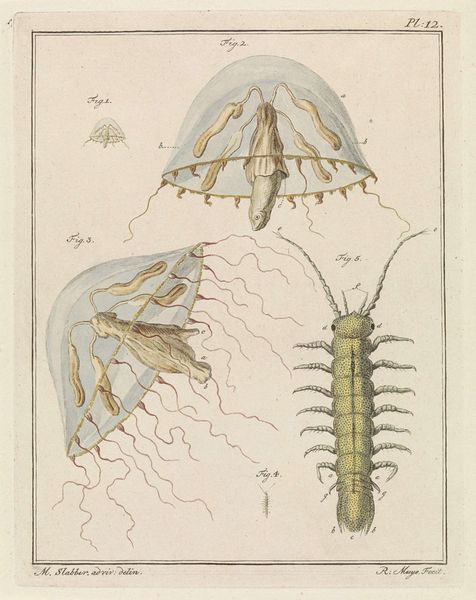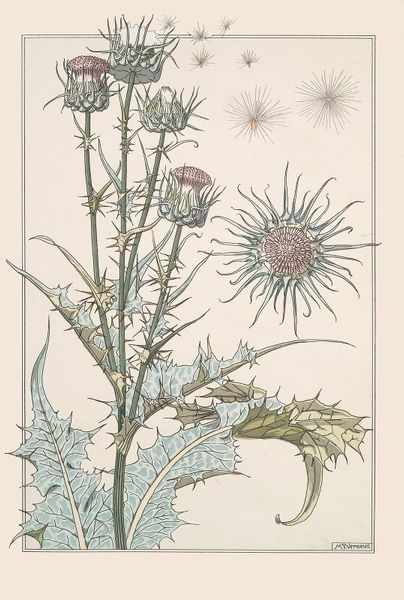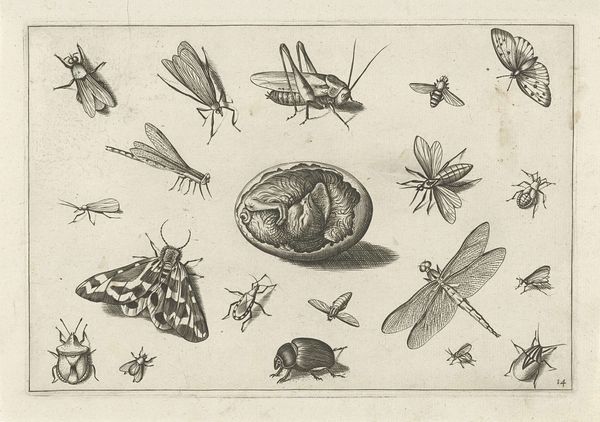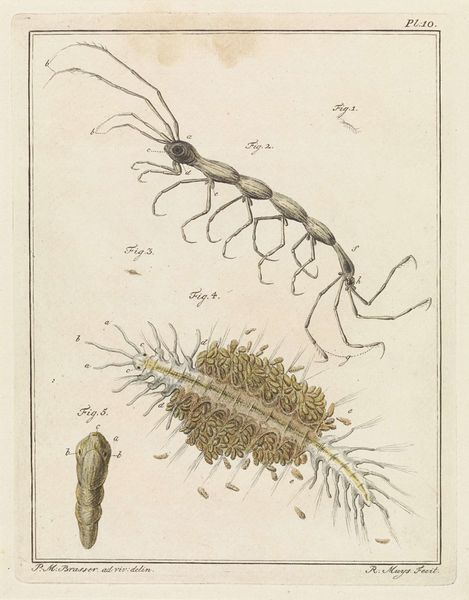
drawing, paper, ink
#
drawing
#
paper
#
ink
#
academic-art
Dimensions: height 217 mm, width 175 mm
Copyright: Rijks Museum: Open Domain
Curator: Upon initial viewing, I'm struck by the precision of these botanical illustrations, almost surgical in their clarity. Editor: Indeed. Let's delve into Noach van der Meer (II)'s "Bloemen, Tab. 8," crafted sometime between 1751 and 1822. It's an ink drawing on paper, currently held here at the Rijksmuseum. What truly captivates me is the meticulous approach—clearly a study deeply rooted in observing nature. Curator: The material tells us something too. Ink on paper wasn't merely a practical choice. Paper then was precious; such detailed renderings speak of patronage, the value ascribed to scientific illustration, and knowledge sharing, suggesting an artist who was likely commissioned to produce such illustrations as a part of wider projects focused on the cataloging and studying the natural world. Editor: Precisely. These "bloemen" aren't just aesthetic objects. They are elements within a complex network of colonial botany. Who has access to this knowledge? Where did these botanical specimens originate, and how might that information have served specific geopolitical interests during that period? Curator: You're right to bring that in. The act of drawing is a type of manual labor, of technical expertise, but who reaps the rewards of that effort? Were these used to help agricultural production, and was the purpose simply the enjoyment of art or of deeper significance related to land ownership, colonial trade and power dynamics? Editor: Yes! Consider the politics of naming and classifying in colonial contexts. Van der Meer’s rendering fixes these flora within a Western framework, subtly influencing how these plants would be understood and, potentially, exploited, in the Dutch imagination. Curator: So what starts out looking fairly benign botanical art, really raises deeper questions about the relationships between human labor and resource extraction! Editor: Exactly. Looking at it, I find that beneath the beauty of each detail, there lies the echoes of complex networks, and legacies of global exploration and power, revealing a landscape far more complex than initially meets the eye. Curator: It really forces us to contemplate the art historical canon, not as a self-contained thing, but in its function as a material expression.
Comments
No comments
Be the first to comment and join the conversation on the ultimate creative platform.
